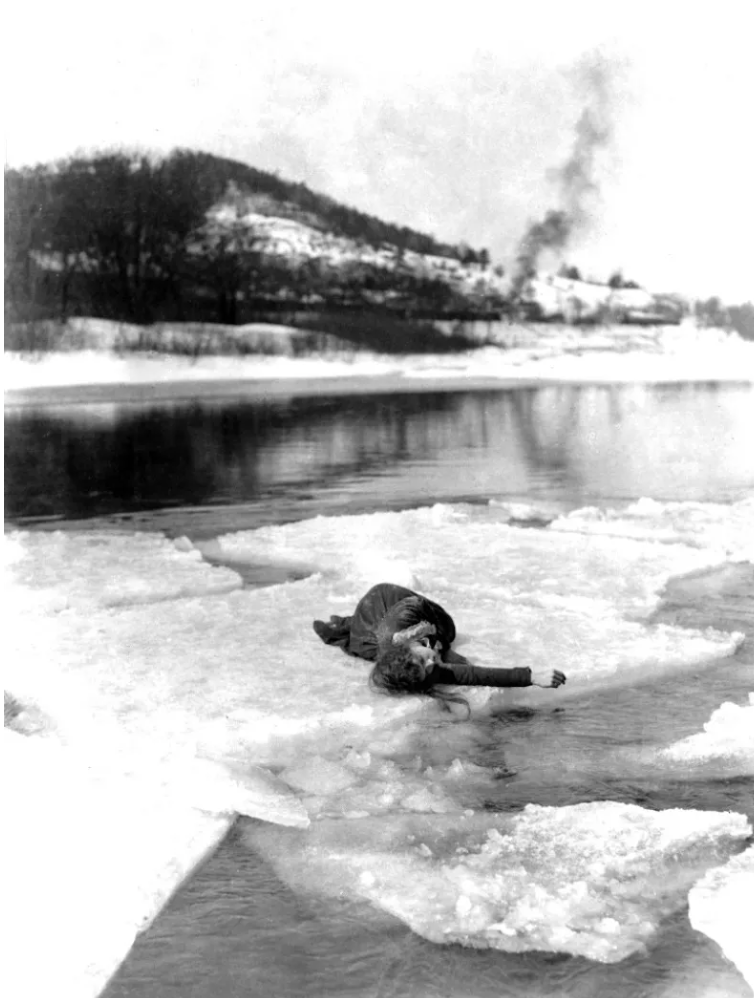 The Londonderry Historical Society, The Weston Historical Society and
The Londonderry Historical Society, The Weston Historical Society and
The Friends of the West River Trail present Hallelujah the Hills!
Please join us on Thursday, March 10, 7:00 PM at The South Londonderry Depot for a rare opportunity to see this zany, Vermont made film.
Light refreshments. Donations appreciated. Doors open at 6:30 PM
Hallelujah the Hills is a zany, indie comedy shot locally (South Londonderry) in 1963. It received accolades at film festivals (Cannes, New York) but was very rarely shown in theaters. Hallelujah the Hills (1963) was written, directed and edited by Adolfas Mekas. The picture was his first feature film.
“Two young men, Jack and Leo, are both courting the same girl. For seven long years they persist, but she finally gives herself to the ‘horrible Gideon.’ In a sense, just as this is the pretext for the film, so the courtships of Vera is a pretext for Jack and Leo to camp out together in the Vermont woods near her home, and to indulge themselves in the wildest of horseplay and high jinks. The film has a Giffithian flavor, a lyrical naivete, which is extremely touching. At the same time it is full of sophisticated film parodies – Rashomon, the New Wave, Douglas Fairbanks, Ma and Pa Kettle. In short, this is one of the most completely American films ever made, in its combination of anarchistic wackiness with a nostalgic sense of the lost frontier and (maybe they’re both the same) the magic of youth.
In 1963 after screenings in the Cannes Festival Critics’ section, the Montreal Film Festival and the Locarno festival where it won the Silver Sail, HALLELUJAH THE HILLS, Adolfas Mekas’ first feature film made its USA debut at the First New York Film Festival at Lincoln Center on September 14, 1963, at a 6:30pm screening. It received rave reviews and went on to a 15-week engagement at the Fifth Avenue Cinema in New York, and movie theatres around the country. Currently, it is available in 35mm from Anthology Film Archives and the Museum of Modern Art, where it is also available in 16mm.
“Plotless and pointless, seemingly without a care for structure or cinematic style, it is infuriatingly unconventional and wholly disarming.” The New York Times
“The funniest comedy you’ve never seen” Chicago Tribune
The New York Times Review. Newcomers Present ‘Hallelujah the Hills,’ a Vermont Farce. Published: December 17, 1963
Three months ago, a modest little Vermont-made farce called “Hallelujah the Hills” surprised and delighted patrons of the first New York Film Festival by boisterously affirming that life can be a ball and movie-making can be fun.
This festive philosophy was broached to a commercial audience for the first time yesterday at the Fifth Avenue Cinema — as close to its spiritual Greenwich Village home as current distribution policies allow. Judging from the response, it should stay there for quite a while.
For this unpretentious exercise in low-budget cinema, made by a group of newcomers with little more than a camera, a few reels of film and a lot of imagination, is the wildest and wittiest comedy of the holiday season. Plotless and pointless, seemingly without a care for structure or cinematic style, it is infuriatingly unconventional and wholly disarming.
“I haven’t seen a movie in 10 days,” mourns Marty Greenbaum from his snow-covered hilltop perch in one of his — and the film’s — infrequently sober moments. If so, he is undoubtedly the only participant who has not. Everyone else involved, from the engaging group of actors to the ingenious young writer-director, Adolfas Mekas, displays an uninhibited affection for cinema, as evidenced in a staggering series of references to other movies. Practically everything is parodied, from D. W. Griffith to Jean-Luc Godard, with Japanese subtitles to supplement a “Ugetsu”-like fireside scene and a lyrical musical score to complement the heroine’s memories of “last summer at Vermont.”
The story, such as it is, has young Mr. Greenbaum and his ebullient friend, Peter H. Bear, as friendly rivals for the hand of Vera, a lovely and enigmatic winter sprite. The role is mimed with gusto by a pair of actresses, Sheila Finn and Peggy Steffans—since Vera, it seems, is seen differently through two pairs of eyes.
If the idea sounds far-fetched, it doesn’t really matter—either to the unsuccessful suitors or to the viewer. The two young men are beatniks on a binge, and their seven-year courtship is merely an excuse for a succession of cinematic sight gags, staged with infectious gaiety by the inventive Mr. Mekas as a tribute to his mentor, Mack Sennett.
Sterner spectators may quibble that the quality of the mirth tapers off toward the end, but the anarchic spirit is hard to resist. The game’s the thing in “Hallelujah the Hills” and a fun movie about the fun of movies emerges as an outrageous lark.


 The Londonderry Historical Society, The Weston Historical Society and
The Londonderry Historical Society, The Weston Historical Society and